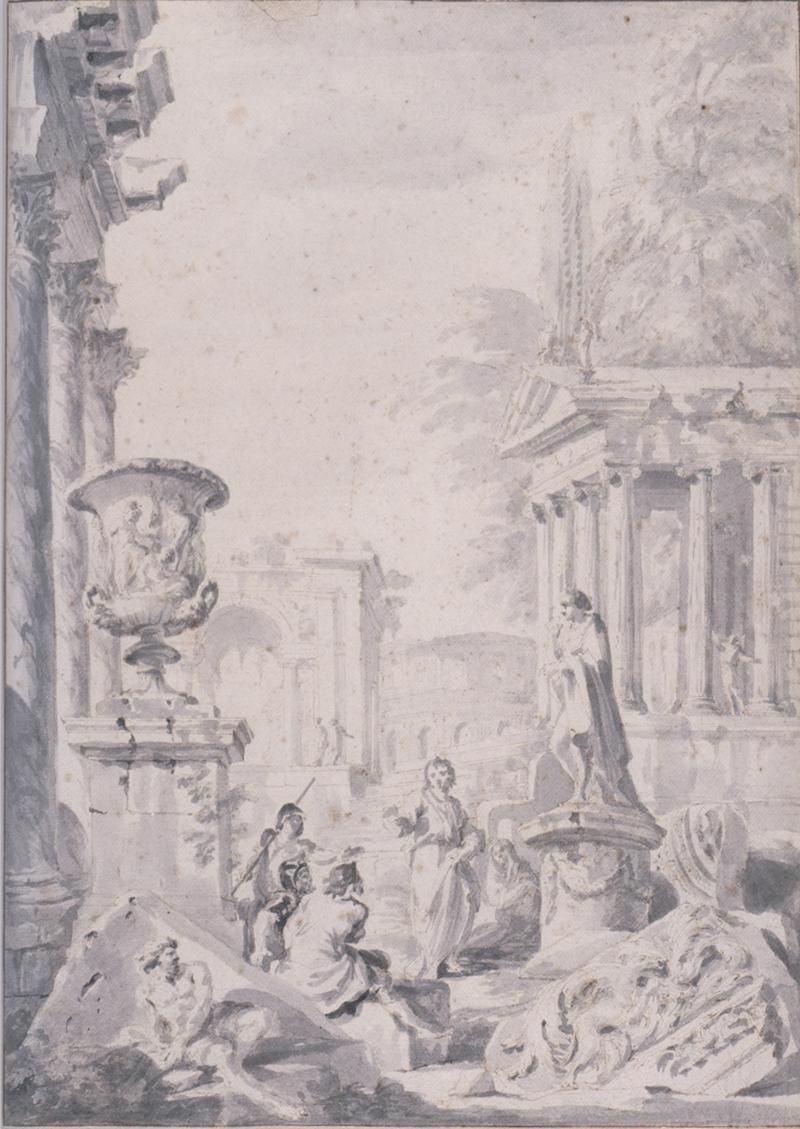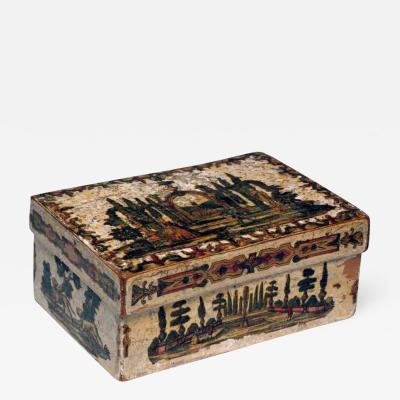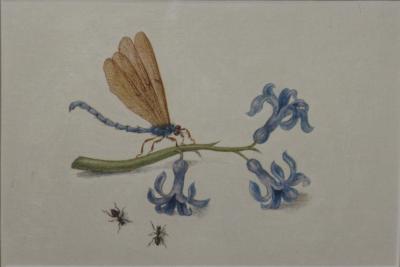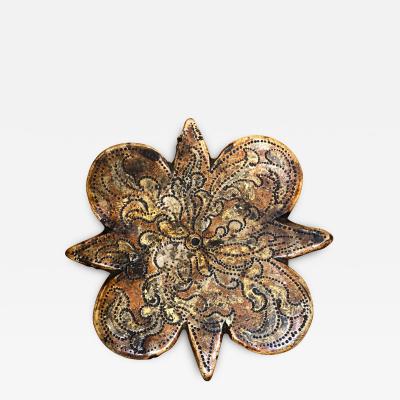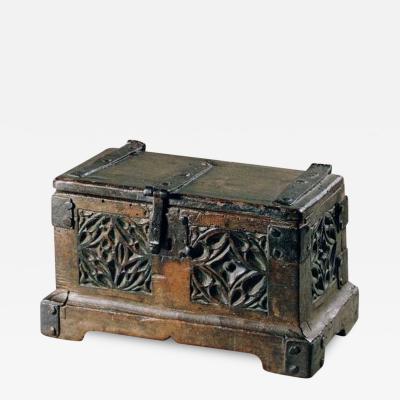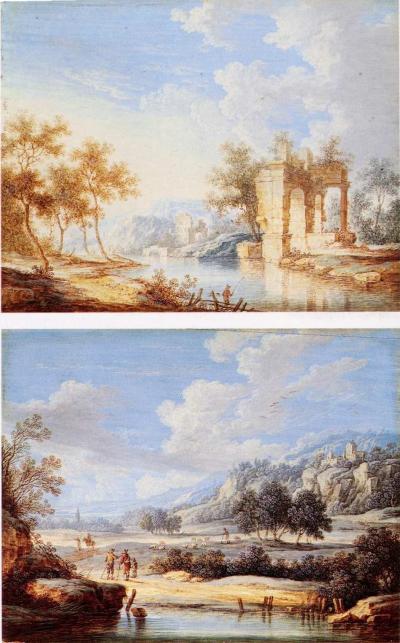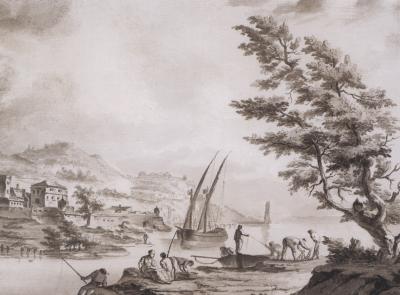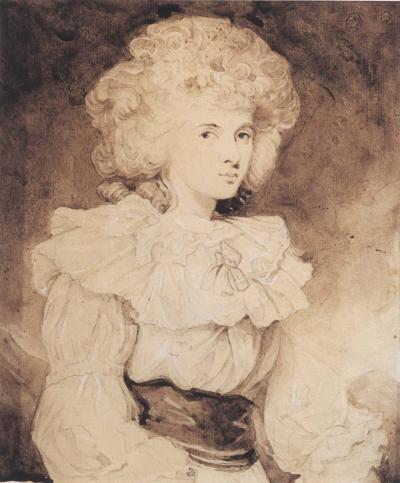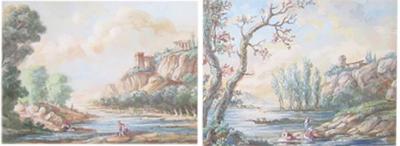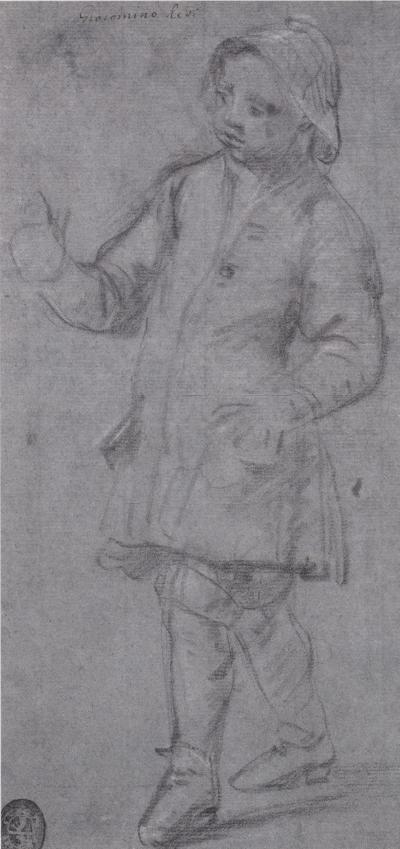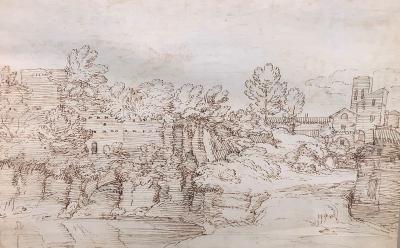Architectural Fantasy with figures amidst Roman Ruins
-
Description
The foremost exponent of real and imaginary architectural vedute painting in Rome, Giovanni Paolo Panini began his career in Piacenza, studying under Francesco Galli di Bibiena, Andrea Galluzzi and Giuseppe Natali, and specializing in scenographic painting. After his move to Rome in 1711 and his further training in figural painting with Benedetto Luti and in landscape painting with Andrea Locatelli, Panini quickly won important commissions for the decoration of Roman palaces and suburban villas. His success and recognized talent led him to be admitted to the Congregazione dei Virtuosi al Pantheon in 1718. Just a year later he was admitted to the Accadèmia di San Luca, where he worked as a teacher of perspective drawing and later served as principal.
By 1720, although still occupied with important fresco commissions, Panini began to concentrate on easel paintings of Rome’s ancient and modern monuments, both capricci and vedute reale, sometimes including historical, mythological or religious scenes. Inspired by the work of Giovanni Ghisolfi, Gaspar van Wittel, and Salvator Rosa, from each of whom he gleaned an important stylistic attribute, Panini created a distinctly personal approach to vedute painting that was animated and picturesque, yet always grand. Also active as an architect as well as a festival and stage designer, Panini was greatly admired by artists and much sought after by patrons. So well regarded was Panini that, in 1732, he was made a member of the French Academy, where he served as a professor of optics until his death. By the end of his career, Panini oversaw a thriving workshop that included Hubert Robert.
Panini’s skill in rearranging Roman monuments to create pleasing imaginary views of the ancient world is apparent in this drawing. To create a suitable backdrop for his central figural group, he included elements of the Temple of the Dioscuri and the Temple of Fortuna Virile, as well as the Teatro Marcello in the background. -
More Information
Documentation: Ample Provenance Notes: Panini used the same elaborate architectural setting for a painting, formerly in the Grassi collection (sold, Christie’s, London, 30 March 1979, lot 44). The figure groupings in these two works are mostly different, although a very similar male figure seated on a marble ruins appears in the foregrou Origin: Italy Period: 18th Century Materials: Pen and brown ink with gray and black on cream laid paper; ruled border in brown ink Condition: Fair. Creation Date: 1691-1765 Styles / Movements: Old Master, Other Incollect Reference #: 305049 -
Dimensions
W. 8 in; H. 11.15 in; W. 20.32 cm; H. 28.32 cm;
Message from Seller:
L' Antiquaire & The Connoisseur, Inc. specializes in European works of art, antiques, and paintings, with a rich history dating back to 1935. For more information, contact us at 212.517.9176 or info@lantiquaire.us.















